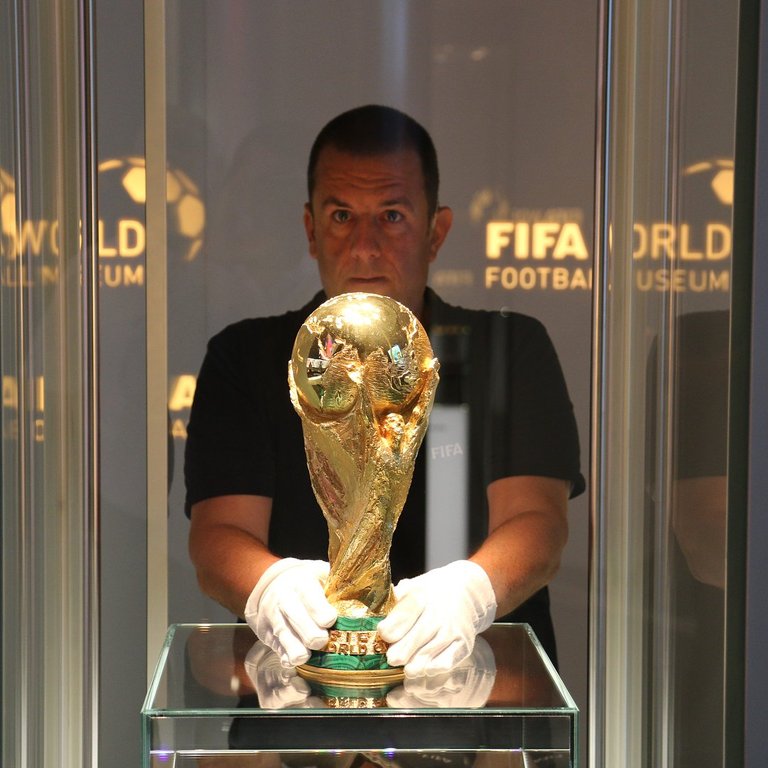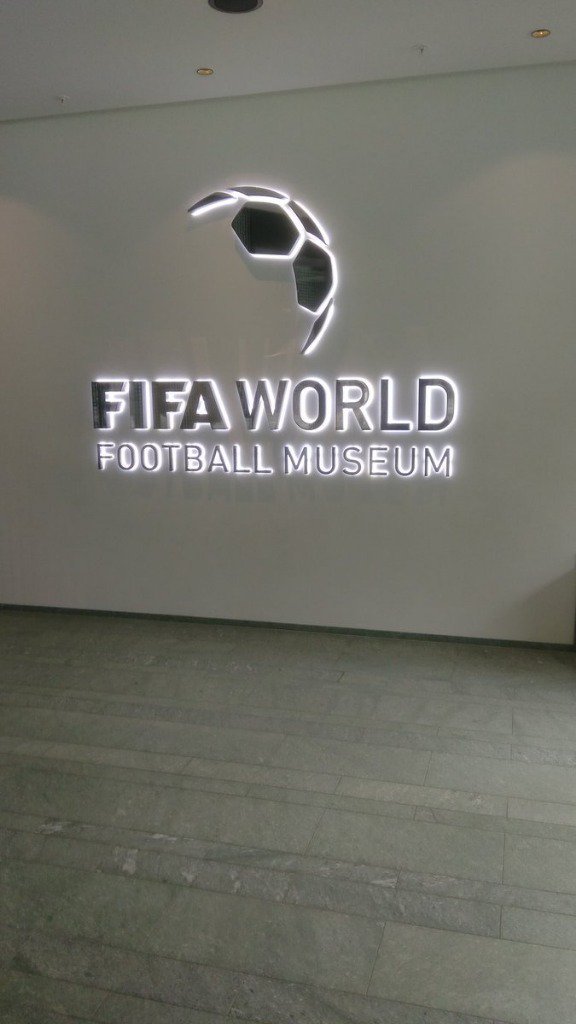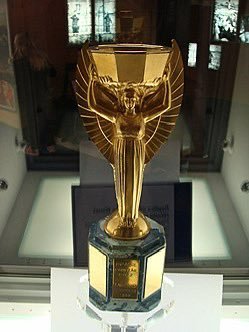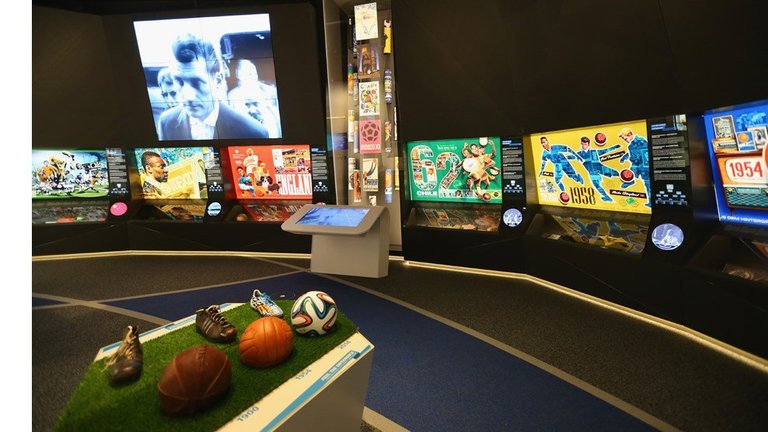
El 28 de febrero de 2016 se inauguró en la ciudad suiza de Zurich el museo de la FIFA, un espacio descomunal dedicado a la rica historia del fútbol mundial.
El museo fue una propuesta del entonces presidente Joseph Blatter quien en una reunión del comité ejecutivo en el año 2012 presentó la idea que inmediatamente fue aceptada.
Este lugar representaría algo similar a lo que para un niño de corta edad es Disneylandia, aquí los fanáticos del fútbol encontrarán toda suerte de artículos, fotografías, trofeos, historias y leyendas de los más encumbrados jugadores y selecciones del mundo. Gran parte del patrimonio futbolístico, desde que comenzó a disputarse oficialmente este deporte, tiene en el museo un lugar donde ser exhibido y admirado.

Por supuesto está la copa del mundo, ese trofeo deseado por todos pero que solo unos pocos pueden tener en sus manos, primero los capitanes y luego todo el equipo que se coronó campeón del mundo.
La copa del mundo, siguiendo la alegoría de Disneylandia, sería como el Santo Grial para los católicos o La Meca para los musulmanes. Se encuentra dentro de una vitrina con altas medidas de seguridad y solo puede ser observada.
Este trofeo se pone en juego desde el mundial de Alemania de 1974 y no puede quedárselo en forma definitiva ningún país a diferencia del anterior denominado Jules Rimet que fue cedido de manera permanente a Brasil ya que por el reglamento vigente en aquel momento le correspondía por haber ganado el torneo mundial en 3 ocasiones.
Una interesante historia de ese primer trofeo mundial se dio durante la segunda guerra mundial cuando fue retirado del lugar donde se encontraba de manera subrepticia por el vicepresidente de la federación italiana de fútbol para resguardarlo de un posible requisamiento por parte de las fuerzas de ocupación alemanas. La joya fue ocultada en el propio domicilio del vicepresidente cuyo nombre era Ottorino Barassi, debajo de su cama en una caja de zapatos. Seguramente este señor no imaginó que años después el trofeo sería robado y desaparecería definitivamente.

La Copa Jules Rimet fue robada en Brasil en el año 1983, exactamente 13 años después de que su selección la obtuviera en forma definitiva al ganar el mundial de México 1970. Lo que pocos saben es que esa copa ya había sido objeto de un robo anterior; efectivamente, en Inglaterra, en el año 1966 pocos meses antes del inicio de la copa del mundo que organizaba ese país, la copa estaba en exhibición en el Central Hall Westminster de Londres y desapareció misteriosamente. Poco después un perro de nombre Pickles que era paseado por su dueño, olfateo un envoltorio de papeles de periódico, con gran sorpresa su dueño, David Corbett, descubrió que en su interior se encontraba el trofeo robado.

Probablemente el robo y la destrucción de la copa Jules Rimet haya llevado a la FIFA a tomar la determinación de cambiar el reglamento.
A propósito del trofeo Jules Rimet, inicialmente se llamó "Diosa de la Victoria" debido a que su imagen representaba a Niké, justamente la diosa griega de la victoria; estaba realizado enteramente en plata y enchapado en oro con un peso total de 4kg. Su base era de lapislázuli y en ella se insertaban las chapas alusivas al torneo y al campeón. En este museo se encuentra una réplica, pero con la base original ya que la estatuilla fue reducida por los maleantes para su venta.
Pero los trofeos no son lo único que podemos apreciar en el museo, hay un sector donde se pueden observar las camisetas y las banderas de los seleccionados de los 211 países que hoy en día están afiliados a FIFA. De más está decir que no falta una sección que homenajea a todos los campeones mundiales.

Por supuesto, podemos encontrar diferentes objetos utilizados y donados por grandes jugadores y técnicos: la cinta de capitán de Franz Beckenbauer en Alemania 1974, los botines que Pelé utilizó en el mundial 1958, las camisetas de Stábile, Maradona y Messi que utilizaron en Uruguay 1930, México 1986 y Qatar 2022 respectivamente, hasta un par de medias utilizadas por el capitán marroquí Romain Saiss, selección africana que llegó por primera vez en la historia a la semifinal de un mundial. También hay objetos insólitos como la estrategia del DT argentino Scaloni para enfrentar a Francia en esa histórica final de Qatar 2022 y la carta de identidad de Ferenc Puskás, extraordinario goleador húngaro subcampeón del mundo en 1954 y ganador de la medalla de oro olímpica en Helsinki 1952.
Todo eso y mucho más se encuentra en el museo del fútbol de FIFA, todo se puede apreciar, nada se puede tocar.
You look and don't touch
On February 28, 2016, the FIFA Museum was inaugurated in the Swiss city of Zurich, a huge space dedicated to the rich history of world football.
The museum was a proposal by then-president Sepp Blatter who, at an executive committee meeting in 2012, presented the idea that was immediately accepted.
This place would represent something similar to what Disneyland is for a young child; there soccer fans will find all kinds of articles, photographs, trophies, stories, and legends of the most distinguished players and teams in the world. Much of the football heritage, since this sport began to be officially played, has a place in the museum to be exhibited and admired.
Of course, there is the World Cup, that trophy desired by everyone but that only a few can have in their hands, first the captains and then the entire team that was crowned world champion.
The World Cup, following the allegory of Disneyland, would be like the Holy Grail for Catholics or Mecca for Muslims. It is located inside a display case with high-security measures and can only be observed.
This trophy has been in play since the 1974 World Cup in Germany and no country can keep it definitively, unlike the previous one called Jules Rimet, which was permanently transferred to Brazil since, according to the regulations in force at that time, it corresponded to it for having won the world tournament 3 times.
An interesting story about that first world trophy occurred during the Second World War when it was surreptitiously removed from its location by the vice president of the Italian football federation to protect it from possible confiscation by the German occupation forces. The jewel was hidden in the home of the vice president whose name was Ottorino Barassi, under his bed in a shoe box. Surely this man did not imagine that years later the trophy would be stolen and disappear permanently.
The Jules Rimet Cup was stolen in Brazil in 1983, exactly 13 years after his team won it definitively by winning the 1970 World Cup in Mexico. What few know is that this cup had already been the subject of a previous theft. ; Indeed, in England, in 1966, a few months before the start of the World Cup organized by that country, the cup was on display in the Central Hall Westminster in London and mysteriously disappeared. Shortly after, a dog named Pickles, whose owner was walking, sniffed out a newspaper wrapper. To his great surprise, his owner, David Corbett, discovered that the stolen trophy was inside.
The theft and destruction of the Jules Rimet Cup has probably led FIFA to decide to change the regulations.
The Jules Rimet trophy was initially called "Goddess of Victory" because its image represented Nike, precisely the Greek goddess of victory; It was made entirely of silver and gold plated with a total weight of 4kg. Its base was made of lapis lazuli and the badges alluding to the tournament and the champion were inserted. In this museum there is a replica, but with the original base since the statuette was reduced by criminals for sale.
But the trophies are not the only thing we can see in the museum, there is a section where you can see the shirts and flags of the teams from the 211 countries currently affiliated with FIFA. Needless to say, there is no lack of a section that pays tribute to all the world champions.
Of course, we can find different objects used and donated by great players and coaches: Franz Beckenbauer's captain's ribbon in Germany in 1974, the boots that Pelé used in the 1958 World Cup, the shirts of Stábile, Maradona, and Messi that they used in Uruguay 1930, Mexico 1986 and Qatar 2022 respectively, even a pair of socks used by the Moroccan captain Romain Saiss, the African team that reached the semifinal of a World Cup for the first time in history. There are also unusual objects such as the strategy of Argentine coach Scaloni to face France in that historic Qatar 2022 final and the identity card of Ferenc Puskás, extraordinary Hungarian scorer, world runner-up in 1954, and winner of the Olympic gold medal in Helsinki 1952.
All that and much more is found in the FIFA football museum, everything can be seen, nothing can be touched.
Héctor Gugliermo
@hosgug
Interesante recorrido, anécdotas super interesantes para todos los amantes del futbol. Tema bastante curioso y muy intrigante, el paradero de la copa Jules Rimet. Para muchos ya fundida y para los creadores de leyendas fuente de buenas historias. Disfruté la lectura. Reblog!
Si, está confirmado que la fundieron para vender el metal precioso. Se pudo recuperar solo la base de lapizlázuli que está en el museo como base de la réplica.
Hay muchas anécdotas interesantes del fútbol y no solo en el museo de FIFA.
Saludos y gracias por todo @leonmaster.
Seguimos aprendiendo. Es lo bueno de este ecosistema y de nuestra comunidad.
Algunas de las cosas que leí son nuevas para mí otras pude refrescarlas.
Me encantaría llegar a ese museo y tocar con la vista la gran variedad de historia y cultura que hay en ese museo.
Muchas gracias mi estimado @hosgug por esta entrega. Feliz jornada. Salud y saludos.
Gracias a ti @tonyes simplemente por estar siempre aquí.
Super interesante 🤔🤔
gracias por leer y comentar @nicolasbm
¿En qué ciudad del mundo se encuentra este museo?
Gracias por el paseo.
Abrazo
@tipu curate 8
Upvoted 👌 (Mana: 0/75) Liquid rewards.
Perdón amigo, tuve un fin de semana agitado.
En Zurich, Suiza.